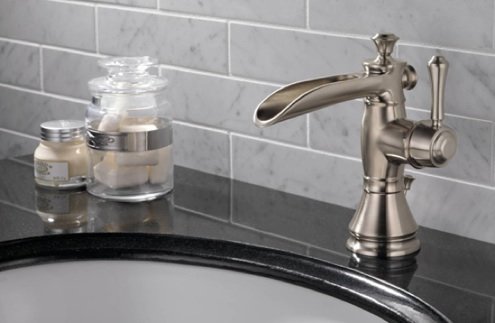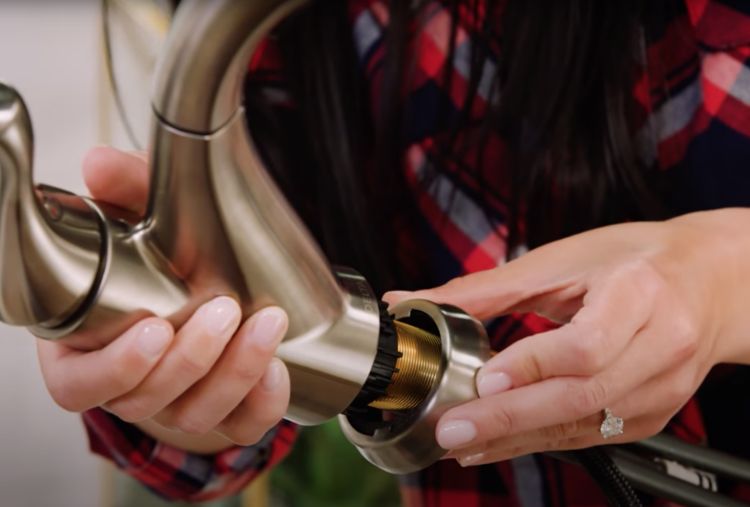Exploring the Significance of Fixing a Broken Faucet
Exploring the Significance of Fixing a Broken Faucet
Blog Article
The writer is making several great points on Water Dripping from Faucet: Why and How to Fix overall in this post below.

Dripping taps might feel like a minor inconvenience, however their impact goes beyond just the aggravation of the audio. From drainage to sustaining unneeded monetary costs and wellness risks, disregarding a dripping tap can cause numerous consequences. In this write-up, we'll delve into why it's critical to address this usual household concern immediately and effectively.
Wastefulness of Water
Environmental Influence
Leaking faucets add substantially to water waste. According to the Environmental Protection Agency (EPA), a solitary faucet trickling at one drip per secondly can waste greater than 3,000 gallons of water per year. This not just strains water sources but additionally affects ecological communities and wildlife depending on them.
Step-by-Step Guide to Dealing With a Dripping Faucet
Tools Required
Prior to trying to repair a leaking tap, gather the needed devices, including an adjustable wrench, screwdrivers, substitute components (such as washing machines or cartridges), and plumber's tape.
Common Faucet Issues and Their Solutions
Determine the kind of tap and the details problem triggering the drip. Usual troubles consist of damaged washing machines, rusty shutoff seats, or faulty O-rings. Refer to manufacturer instructions or online tutorials for step-by-step guidance on repairs.
Financial Costs
Increased Water Costs
Past the ecological effect, leaking faucets can inflate water costs considerably. The collected waste over time converts right into higher energy costs, which could have been stayed clear of with timely fixings.
Prospective Residential Property Damage
In addition, extended dripping can cause damage to components and surfaces bordering the faucet. Water build-up can cause staining, deterioration, and even architectural issues if left unattended, leading to added repair work expenses.
Wellness Issues
Mold and Mildew Growth
The constant existence of wetness from a trickling faucet develops an optimal atmosphere for mold and mildew and mold development. These fungi not only endanger interior air top quality yet likewise position wellness risks, especially for people with respiratory system problems or allergic reactions.
Waterborne Diseases
Stagnant water in leaking taps can become a breeding ground for germs and various other pathogens, enhancing the danger of waterborne illness. Impurities such as Legionella microorganisms thrive in stagnant water, possibly bring about serious illnesses when ingested or inhaled.
DIY vs. Professional Repair
Advantages and disadvantages of DIY Repair
While some might try to take care of a leaking faucet themselves, DIY repair work come with their very own collection of difficulties. Without proper expertise and devices, DIY efforts can worsen the issue or bring about incomplete repairs, lengthening the problem.
Benefits of Hiring an Expert Plumber
Working with a professional plumber guarantees that the underlying root cause of the trickling faucet is dealt with successfully. Plumbing professionals possess the knowledge and devices to identify and fix tap problems successfully, conserving time and minimizing the risk of further damage.
Environmental Duty
Specific Payment to Conservation
Taking responsibility for fixing dripping taps straightens with wider efforts toward water preservation and ecological sustainability. Every individual's actions collectively make a significant influence on protecting precious sources.
Lasting Living Practices
By prioritizing punctual repair work and adopting water-saving behaviors, individuals add to sustainable living techniques that benefit both existing and future generations.
Preventive Measures
Normal Upkeep Tips
To prevent trickling taps, perform regular upkeep such as cleansing aerators, evaluating for leaks, and changing worn-out components promptly. Furthermore, consider installing water-saving tools or updating to much more reliable components.
Relevance of Prompt Fixes
Addressing dripping taps as soon as they're seen protects against more water waste and potential damages, ultimately conserving both water and money in the long run.
Impact on Residential Or Commercial Property Worth
Understanding of Well-Maintained Residential Or Commercial Property
Keeping a property in good condition, consisting of addressing maintenance issues like trickling taps, boosts its viewed worth and charm amongst possible buyers or occupants.
Influence on Resale Worth
Features with well-kept plumbing fixtures, consisting of faucets, command greater resale values in the real estate market. Resolving trickling faucets can add to a favorable impression during property inspections and arrangements.
Verdict
Attending to a leaking tap exceeds simple convenience; it's an essential action toward saving water, reducing financial expenses, and guarding health and residential property. Whether via DIY repair work or expert aid, doing something about it to deal with dripping faucets is a small yet impactful way to promote responsible stewardship of resources and add to a healthier, more sustainable future.
How to Fix a Dripping or Leaky Faucet
A leaking faucet is one of the most common problems that homeowners encounter, but it being commonplace doesn’t make it any less annoying. The constant drip drip drip of a leaking bathtub faucet, showerhead, or sink tap can disturb your home’s serenity. Left neglected, a dripping faucet can also result in higher water bills and discoloration or mold growth in your sink or plumbing fixtures.
Fortunately, you don’t have to be a trained plumber to know how to stop a dripping faucet. With some basic tools, replacement parts, and a little patience, leaky faucet repair is a breeze. In this article, we’ll explain what causes dripping faucets and how you can fix them.
What Causes a Leaking Faucet?
Kitchen and bathroom faucets come in all manner of designs, but most involve some combination of valves, O-rings, seals, and washers. The O-ring is usually the weakest link, but any one of these pieces can wear down over time. Heat, moisture, temperature fluctuations, minerals, mold, and movement can contribute to warping and corrosion, breaking the watertight seal. This just comes with the territory of being a homeowner. Everything is always subject to wear and tear, and some component parts of your appliances and fixtures need to be replaced on occasion. At least replacement O-rings are cheap!
More rarely, dripping faucets can be a symptom of excessively high water pressure. Were this the case in your home, you would probably notice that the leak is not isolated to one faucet. Water pressure issues are harder to resolve on your own. We recommend contacting a professional plumber if you suspect your water pressure is too high.
How to Fix a Dripping Faucet
Pipe wrench or monkey wrench Allen wrench set Screwdrivers Old towel or rag Shut off the water.
Before you do anything, you need to turn off the water to keep from drenching your kitchen or bathroom. You should find a valve under the sink and against the wall. Once you’ve turned this valve, try turning the faucet on to confirm that the water source has been cut off.
If you can’t locate your local valve for the faucet you’re working on, you can always shut off the water to the house at the main valve. Of course, this will prohibit anyone from using the sinks, showers, or toilets while you’re working on the faucet that’s giving you trouble.
Plug or block the drain.
You’ll be disassembling the faucet and removing some small bits of hardware. Plug the drain with a stopper or rag to avoid the possibility of a small screw falling into your P-trap.
Take apart the faucet assembly.
There are several varieties of kitchen and bathroom faucets, each with its own manner of assembly. For detailed instructions on how to disassemble your faucet, you can refer to the fixture’s manual or contact the manufacturer. If you know whether you have a ball, disc, cartridge, or compression faucet, you can find detailed schematics online.
In general, you need to begin by removing the faucet handles. You might notice a small screw that you’ll need to remove with a screwdriver or Allen wrench. If you don’t see any visible securing hardware, it’s likely hidden under a decorative cap that can be unscrewed or popped off with flathead screwdriver.
Remove each piece methodically, consulting a schematic when necessary. Take notes or arrange the pieces in such a way to make it easier to correctly reassemble the faucet later.
Remove the cartridge.
Once you’ve removed the handles and securing hardware, you should be able to remove the valve cartridge or stem. Some cartridges will slide right out. Other faucet models will require you to loosen a nut with a pipe wrench before you can remove the valve stem.
Examine the exposed hardware.
With the cartridge or stem removed, inspect the component parts. Check the rubber O-rings for wear and tear. Also examine the seat washer for corrosion or other damage. These pieces are usually the responsible parties for a dripping faucet, but it’s worth inspecting the other component parts while you have the faucet disassembled.
Find replacement parts.
Once you’ve identified which faucet component has failed, find an identical replacement. Your local hardware store should have O-rings, seat washers, and other standard components in stock. If you have a luxury or uncommon faucet, you may have to contact the manufacturer for a replacement part.
It’s a good idea to take your old parts with you to the hardware store so you can compare them with the store’s inventory and be sure you’re purchasing the correct replacement.
Reassemble the faucet.
With your new parts in hand, reconstruct the faucet and handles. Don’t be tempted to overtighten screws or nuts. You might think this could create a better seal, but it can instead damage or bend a delicate part of the assembly and create a new problem for you.
Turn on the water and test the faucet.
The only thing left to do is test your work. Unplug the sink, turn the water back on, and try the faucet. Congratulate yourself on a job well done!
https://www.libertyhomeguard.com/how-to-fix-a-dripping-or-leaky-faucet/

Do you like reading about ? Make a review further down. We would be glad to know your reactions about this blog post. In hopes that you visit us again in the future. For those who liked our blog entry please make sure you remember to pass it around. I thank you for your readership.
Report this page